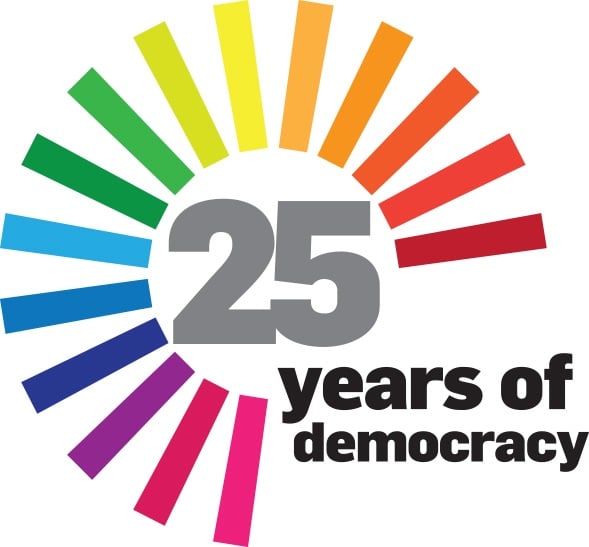
The black middle class more than doubled in size from 2.2 million in 1993 to 5.4 million in 2008. But does it produce a better educated and trained workforce and factors that are essential ingredients for economic development and growth?
His alarm rings every morning at 6am, but when he’s on a deadline, the wake-up call comes at 3am.
This has been Teboho Maluleka’s* routine since he began working as an intern in 2014.
The 28-year-old’s starting salary was too small to support himself and his family, but, by 2018, his monthly net income after tax was R26 000.
This, together with the freelance jobs he takes on, earns him at least R38 000 a month.
“I am broke,” he says as we sit at Pata Pata, a restaurant known for African cuisine in Johannesburg’s Maboneng Precinct.
“I am tired, and I am broke,” he says again.
Although the definitions of the black middle class remain unclear, Maluleka is firmly placed in this bracket.
Former director of the UCT Unilever Institute of Strategic Marketing, Emeritus Professor John Simpson, defines middle class South Africans as those earning between $1 550 (R21 000) and $4 800 (R67 500) per month.
This definition was expanded to include those who meet certain criteria, such as having a white-collar job and owning a car.
The black middle class more than doubled in size from 2.2 million in 1993 to 5.4 million in 2008.
It outgrew that of whites in 2014 and, by 2018, it had grown to 6 million individuals, according to the ANC’s January 8 statement that year.
The South African government has used black middle class growth as a yardstick for South Africa’s post-1994 economic policy.
The government saw the expansion of the black middle class as a means to provide a window through which progress in socioeconomic development can be evaluated.
The Human Sciences Research Council research specialist, Dr Justin Visagie, says the middle class was expected to create knock-on effects on growing spending power, a better educated and trained workforce, more investment, more job creation and an increase in savings and entrepreneurship – factors seen as essential ingredients for economic development and growth.
Maluleka’s life can be overlaid against South Africa’s economic and political policies intended to create the black South African middle class.
We sit at Pata Pata and drink our second glass of wine while Miriam Makeba’s melancholic Malaika plays in the background.
Soweto-born Maluleka is dressed in black from head to toe. He’s cool and understated. He has just bought a house in one of Johannesburg’s northern suburbs.
He contemplates leaving formal employment for freelancing or, at the very least, to read for a master’s degree in economics at Harvard University.
Maluleka was three years old in 1994. He and his elder brother were raised by both his working-class parents in Dobsonville, Soweto.
“My mother worked in retail as a sales consultant for Stuttafords while pursuing a degree in radiology. My father worked for Telkom as a technician for fixed line services,” he says.
To support the creation of the black middle class, the ANC expressed, in a series of policy documents beginning with the Reconstruction and Development Programme (RDP) in 1994, its signal for the accession of black South Africans to economic power.
Economist and director at the Centre for Economic Development and Transformation, Duma Gqubule, calls RDP “an ambitious economic development blueprint”.
Gqubule says the RDP articulated the main aspirations of the ANC for post-apartheid South Africa.
It focused on growth, development, reconstruction and development in a consistent macroeconomic framework, using the Keynesian paradigm of government expenditure-related growth policies.
John Maynard Keynes spearheaded a revolution in economic thinking that overturned the then-prevailing idea that free markets would automatically provide full employment.
Keynes argued that governments should solve problems in the short term rather than wait for market forces to fix things in the long run.
He advocated adjusting policies every few months to keep the economy at full employment.
Gqubule says the RDP was successful in some areas, such as social security, in which the government established an extensive welfare system.
Under this programme, free health care was implemented for pregnant women and small children, and free meals provided for between 3.5 million and 5 million school children.
The RDP aimed to achieve an annual GDP growth rate of 5% and create 300 000 to 500 000 jobs a year.
The introduction of the macroeconomic policy framework called the Growth, Employment and Redistribution (Gear) strategy in 1996 was met with major criticism from leftist economists.
Gear’s target was to achieve an annual GDP growth rate of 6% and the creation of 400 000 jobs a year by the year 2000.
BUT IT WASN'T TO BE
Gear modelling was flawed and was based on dubious, ideologically laden assumptions and improbable projections about how private investors and exporters would respond to the policies, says Gqubule.
“Gear’s slash-and-burn fiscal policies, that included deep cuts to capital spending and sky-high interest rates, depressed the economy. There were deep cuts in public sector capital spending,” he says.
This led to a massive increase in unemployment between 1995 and 2003.
The number of unemployed people more than doubled to 4.6 million people, an increase of 2.6 million, from 17% to 28% while the ranks of the unemployed more than doubled to 8.3 million, an increase of 4.3 million, from 29% to 42%.
It was also during the implementation of Gear that Maluleka’s father lost his job.
Maluleka speaks about his father matter-of-factly, resigned to the fact that he is the primary caretaker of the 69-year-old man.
“My family had financial problems as my father was unemployed when I started my high school career. My mother became the breadwinner for the first three years after I started high school. Given our relatively difficult financial situation ... my family couldn’t afford to pay for my school fees,” he says.
When Maluleka started high school, the government introduced a school fees exemption policy for pupils from financially disadvantaged families, which “supported me from Grade 8 right up to completing my matric year”, he says.
Maluleka studied economics and journalism at university, thanks to an academic scholarship from the department of higher education.
Read: Soweto's middle class rises up
UCT professor and director of the Democracy in Africa Research Unit, Robert Mattes, writes that the growth of the black middle class was driven by legislative changes regarding education, employment equity (affirmative action) and black economic empowerment.
Mattes says: “Higher levels of education stimulate cognitive development and promote civic values in that a sizeable middle class provides a critical mass of people who possess the organisational, financial, managerial, and research skills to staff the legislatures, ministries, departments, and agencies that make democracy work.”
Simpson adds that several factors helped to swell the ranks of South Africa’s black middle class, including credit availability, education, the government’s Black Economic Empowerment (BEE) programme and general economic growth, which led to more job creation.
Maluleka says affirmative action played a role in him securing an internship at a media house.
“I applied for an internship and went through a rigorous interview process. Looking back, although I did get the job based on merit, I do think that affirmative action and employment equity played a big role,” he says.
The 1998 Employment Equity Act required employers to develop and implement plans to achieve racial equity in the workplace.
Government efforts to build a black middle class required affirmative action in public service hiring, and in the private sector by setting demographic employment benchmarks, targets and time frames.
Government also required successful bidders for state contracts to achieve minimum black economic empowerment scores.
The BEE policies, together with economic policies, were created to solidify the creation and sustainability of the black middle class.
During that period, the report found that about 85% of white households and 75% of Indian households were middle class.
Middle class coloured households increased from 41% between 1998 and 2000 to 48% between 2004 and 2006.
The report also found that almost no rural African households had a middle class standard of living at the time, while the percentage of urban middle class African households rose from 15% to 22%.
According to the report, among middle class households, whites were much better off than others.
In 2006, Gear was dropped for the Accelerated Shared Growth Initiative of SA (Asgisa).
This plan targeted GDP growth rates of 4.5% between 2005 and 2009, and 6% between 2009 and 2014 with the aim of halving poverty and unemployment by 2014.
But, according to the International Monetary Fund’s World Economic Outlook, April 2017, South Africa’s GDP dropped by 1.5% in 2009 despite the implementation of expansionary fiscal policies that year.
Between December 2008 and March 2010, the economy shed almost one million jobs as employment fell to 13.8 million from 14.8 million.
In 2010, the New Growth Path set a target of five million jobs to be created by 2020. And, in 2012, the long-term National Development Plan set a target of 11 million jobs by 2030.
During the post-Gear phase, there was an improved global and domestic economic environment.
Internationally, commodity prices and stock markets surged after 2003.
Between 2009 and 2017, South Africa’s GDP grew by 1.6% a year. GDP per capita, the international benchmark of average living standards, grew by 0.3% a year.
But despite this, Stats SA’s latest Labour Force Survey shows that the number of unemployed South Africans, using the more realistic expanded definition, soared by 3.6 million to 9.5 million in March 2018 from 5.9 million in December 2008, from 28.7% to 36.7%.
The middle class took a further hit last year when the economy grew by 0.8%, GDP per capita declined and the number of unemployed people soared to 9.7 million.
UCT’s Leibbrandt and Zizzamia say that high unemployment rates hit the middle class that derives its status from salaried income on which it depends to sustain its lifestyle: “The stable middle class and elite receive more than 80% of their income from the labour market. While the vulnerable middle class receives two-thirds of its income from the labour market, this is often from irregular and insecure forms of work. The chronic poor receive only one-third of their income from employment, and more than half their income from social grants.”
They add that gaining or losing a job is the most important determinant of economic mobility.
A shock, such as the death of an employed person, can push a household out of the middle class.
Also, growing up in urban areas contributes to upward mobility for the black middle class. Proximity to urban centres provides economic opportunity, according to Leibbrandt and Zizzamia.
Soweto-born Maluleka had access to schools and universities and was close to the job market.
He says there is no doubt ANC economic policies played a role in giving opportunities to black people.
“I am a product of the policies; a beneficiary of attending no-fee schools; receiving a government-linked scholarship for university study and getting employed partly through affirmative action and employment equity. The polices have enabled me to become educated, be an employed citizen and have the opportunity to have a quality life,” he says.
STILL, HE FEARS FOR THE FUTURE
“Policies that helped to lift me more than 15 years ago are not enough to support young people in an environment that is now more competitive,” he says.
*Not his real name




 Publications
Publications
 Partners
Partners









